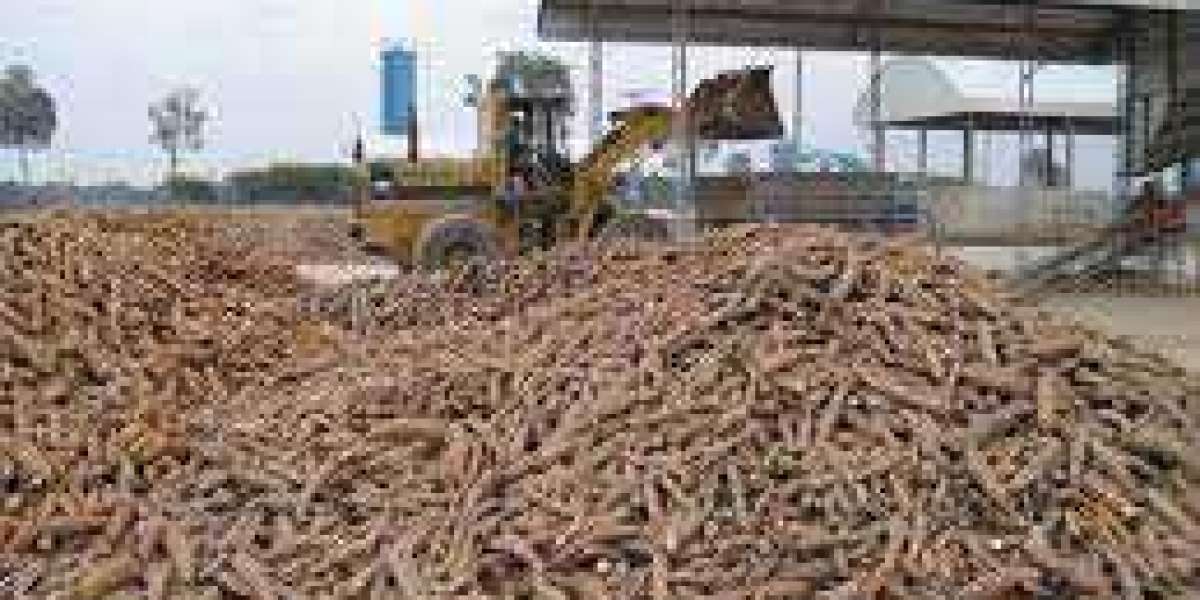The global cassava processing market size reached a volume of nearly 284.92 MMT in 2024. The market is further expected to grow positively at a CAGR of about 2.90% during the forecast period of 2025 to 2033, reaching a volume of approximately 368.52 MMT by 2033. This growth is fueled by cassava’s versatility, its importance as a food security crop, and its expanding applications in various industries. In this blog post, we explore the market dynamics and emerging opportunities in the cassava processing industry.
Market Overview
Cassava is a starchy root crop widely cultivated in tropical and subtropical regions. Its adaptability to diverse soil and climate conditions makes it a staple food and industrial raw material. The crop is processed into multiple products, including cassava starch, flour, chips, and ethanol, catering to food, feed, and industrial applications.
As global demand for sustainable and cost-effective alternatives grows, cassava processing has gained significant attention. The crop plays a vital role in addressing food security in developing countries and supports industrial applications such as bioethanol production and adhesives manufacturing.
Market Size
In 2024, the global cassava processing market reached a volume of 284.92 MMT, showcasing steady demand across various sectors. The projected growth to 368.52 MMT by 2033 reflects a rising global interest in cassava-based products, driven by increasing population, industrial expansion, and innovations in processing technologies.
Market Share
The cassava processing market is diverse, with significant contributions from product types and end-use sectors:
- By Product Type: Cassava starch dominates the market, accounting for the largest share due to its applications in food, paper, and textile industries. Cassava flour and chips are also key contributors, especially in the food and feed industries.
- By End Use: The food industry leads in cassava consumption, followed by the feed and industrial sectors. Emerging demand for cassava-derived ethanol has also contributed significantly to market growth.
- Regional Share: Africa, Asia-Pacific, and Latin America collectively account for the majority of cassava production and processing.
Market Trends
- Gluten-Free Products: Rising health consciousness has increased the demand for gluten-free cassava flour as an alternative to wheat flour.
- Sustainable Energy: Cassava-derived ethanol is gaining traction as a renewable energy source, reducing dependence on fossil fuels.
- Animal Feed: Cassava chips and pellets are emerging as cost-effective feed options, particularly in regions with high livestock populations.
- Technological Advancements: Innovations in cassava processing, such as mechanized peeling and drying techniques, are improving efficiency and product quality.
Market Analysis
SWOT Analysis
- Strengths: Wide adaptability, high carbohydrate yield, diverse applications.
- Weaknesses: Susceptibility to pests and diseases, short shelf life.
- Opportunities: Expanding markets for bioethanol and gluten-free products.
- Threats: Competition from alternative crops and fluctuating global prices.
Porter’s Five Forces Analysis
- Threat of New Entrants: Moderate, due to capital requirements and technical expertise.
- Bargaining Power of Suppliers: Low, as cassava cultivation is widespread.
- Bargaining Power of Buyers: High, given the availability of substitutes.
- Threat of Substitutes: Moderate, influenced by regional dietary preferences.
- Competitive Rivalry: High, driven by innovation and market expansion.
Market Segmentation
By Product Type
- Cassava Starch: Widely used in food products, adhesives, and textile manufacturing.
- Cassava Flour: A popular gluten-free alternative in baking and culinary applications.
- Cassava Chips: Primarily used in livestock feed and as a snack ingredient.
- Cassava-Derived Ethanol: Emerging as a sustainable energy source for industrial and transportation needs.
By End Use
- Food Industry: Cassava products are essential ingredients in snacks, sauces, and baked goods.
- Feed Industry: High-energy cassava chips and pellets are ideal for livestock feed.
- Industrial: Cassava starch and ethanol serve various industrial applications, including biofuel production and textile processing.
Market Growth
The cassava processing market is set to grow at a CAGR of 2.90% during 2025-2033, fueled by:
- Population Growth: Rising demand for staple foods and processed products.
- Sustainability Trends: Increased adoption of renewable energy sources like cassava-derived ethanol.
- Technological Progress: Advancements in cassava processing machinery and techniques.
- Emerging Markets: Expanding demand in regions like Africa and Asia-Pacific.
Recent Developments and Challenges in the Market
Recent Developments
- Technological advancements in cassava drying and peeling processes to reduce waste.
- Government initiatives in developing countries to promote cassava farming and processing.
- Partnerships between private and public sectors for bioethanol production.
Challenges
- High perishability of raw cassava requires efficient supply chain management.
- Vulnerability to pests, diseases, and climate change impacts.
- Competition from other starch-producing crops like maize and potato.
Key Players in the Market
The global cassava processing market features several prominent players involved in production, processing, and distribution. Key companies include:
- Ingredion Incorporated
- Cargill, Incorporated
- Tereos Group
- Tate Lyle PLC
- AVEBE U.A.
These companies are investing in research, expanding production facilities, and forming strategic partnerships to strengthen their market position.
Upcoming Challenges in Market
- Balancing supply and demand to prevent price volatility.
- Developing pest-resistant cassava varieties to ensure stable production.
- Overcoming infrastructure challenges in developing regions for efficient cassava processing.
- Meeting global standards for food safety and quality in cassava-based products.
Competitive Landscape
The cassava processing market is highly competitive, with companies focusing on innovation and sustainability. Key strategies include:
- Expansion into emerging markets in Africa and Asia-Pacific.
- Development of value-added cassava products to diversify revenue streams.
- Adoption of advanced technologies to improve efficiency and reduce production costs.
The global cassava processing market is poised for steady growth, driven by its versatile applications and rising global demand for sustainable products. As technological advancements and innovations reshape the industry, opportunities abound for stakeholders to address challenges and tap into emerging markets. By leveraging cassava’s potential, the industry is set to play a vital role in food security, renewable energy, and industrial applications in the years to come.






